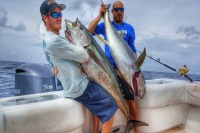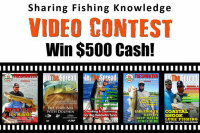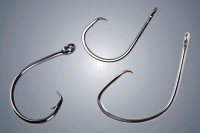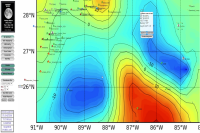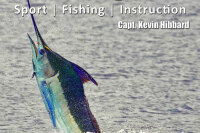Explore the art of wreck fishing for grouper in Florida. This guide offers insights into selecting gear, understanding fish behavior, and mastering techniques, transforming each fishing trip into a lesson in patience, strategy, and the interconnectedness of history and nature in the pursuit of one of the sea's most formidable adversaries.
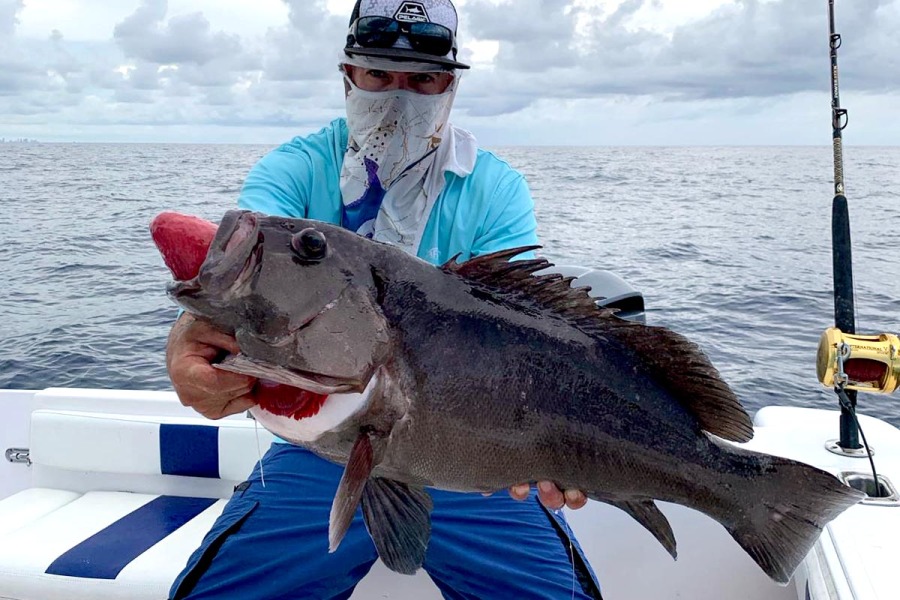
Wreck Fishing for Grouper in Florida
- Introduction to Wrecks: Dive into the thrilling world of wreck fishing for grouper, highlighting the allure of underwater structures in South Florida and the Gulf of Mexico.
- Understanding Fish Behavior: Learn about the habitat preferences of various fish species around wrecks, emphasizing the behavior of grouper and other significant species.
- Locating the Perfect Wreck: Techniques and resources for finding the best fishing spots, with a focus on the extensive artificial reef network off Florida's coast.
- Essential Gear and Techniques: Detailed guide on selecting the right fishing gear and techniques to increase your chances of catching grouper.
- Fishing Rigs and Baits: Insights into the most effective rigs and baits for targeting grouper around wrecks.
- Tips and Tricks for Success: Additional advice on bait selection, reading currents, and strategic fishing approaches.
- Conclusion: Summary of key points and an invitation for readers to explore the underwater world of wreck fishing.
Intro to Fishing Wrecks
The allure of wreck fishing in the warm waters of South Florida and the vast Gulf of Mexico is a serendipitous journey for those who yearn to pit their skills against some of the oceans top predators. This call is magnified in the pursuit of the elusive and powerful grouper—a prized catch that lures anglers from all over to these southern shores. These submerged wrecks, vestiges of maritime history, have transformed over time into bustling underwater cities, teeming with a diverse array of marine life, offering a unique habitat that is perfect for the grouper to thrive.
- Gag Grouper: Often found lurking around the rocky bottoms and shipwrecks, the gag grouper is renowned for its fight. Anglers admire this species for its sudden powerful runs and the sheer will it displays in trying to return to the safety of the wreck. Its camouflage and sudden bursts make it a thrilling catch.
- Black Grouper: The black grouper is known for its brute strength and size, making it one of the most challenging catches around wrecks. It requires not only strength but strategic fishing techniques to outwit this intelligent species. Its preference for deeper waters and larger structures adds an element of adventure to the pursuit.
- Red Grouper: Slightly less formidable than its cousins but no less coveted, the red grouper is prized for its delicious flesh. Found on softer bottom terrains near wrecks, targeting this species often leads to exciting by-catches, adding variety and surprise to the fishing experience.
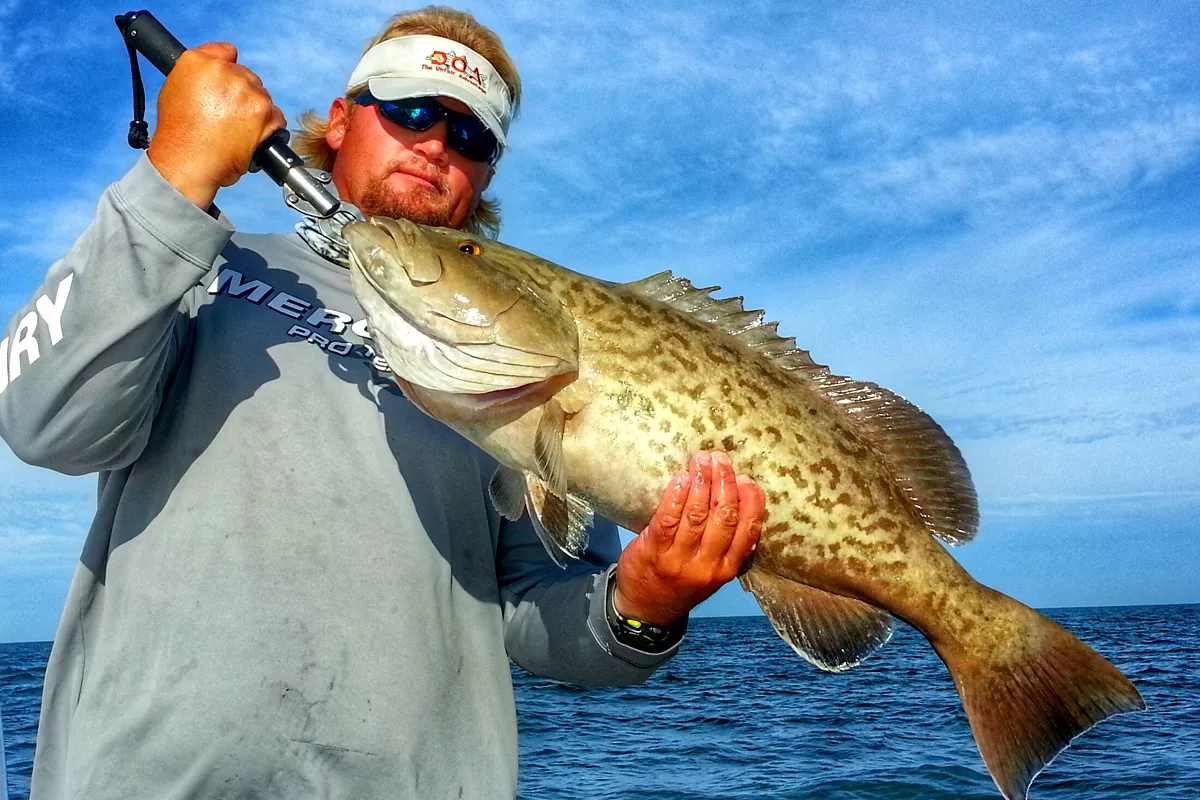
Understanding Fish Behavior
Before the thrill of the first bait dropping into the salt, a deep appreciation and understanding of the intricate ecosystems created by underwater wrecks is essential. These submerged structures, far from being inert piles of debris, pulse with life, acting as magnets for a diverse array of marine species. Within these complex habitats, a delicate balance of predator and prey plays out, with species such as grouper, amberjack, and various types of snapper establishing their dominions. Success in these waters is not a matter of chance but the result of understanding the nuanced relationships that define these aquatic communities.
Locating the Perfect Wreck
The quest to find the perfect wreck for fishing in South Florida is a hopscotching treasure hunt, where each sunken structure holds the promise of an unforgettable catch. The region's coastline, blessed with an abundance of wrecks ranging from officially sanctioned artificial reefs to the remains of vessels met with unfortunate fates, serves as a fertile ground for both seasoned and novice anglers aiming to hook grouper and other prized species. Unraveling the potential of these underwater ecosystems requires a blend of modern technology, traditional knowledge, and a deep understanding of the marine environment.
Leveraging Modern Technology
- Fish Finders and Sonar Technology: Today's anglers have at their disposal sophisticated sonar technology capable of painting a vivid picture of what lies beneath the waves. Fish finders can help identify wrecks and the presence of fish, providing invaluable insights into the topography and potential hotspots. The key is to interpret sonar readings accurately, identifying the structure's size, complexity, and the likelihood of it being a grouper haven.
- Online Resources and GPS Coordinates: The digital age has made locating fishing wrecks more accessible than ever. Numerous online databases and fishing forums share GPS coordinates for known wrecks, along with details on depth, structure type, and resident fish species. These resources are continually updated, offering a wealth of information at the angler's fingertips. However, it's essential to cross-reference this information for accuracy and recency.
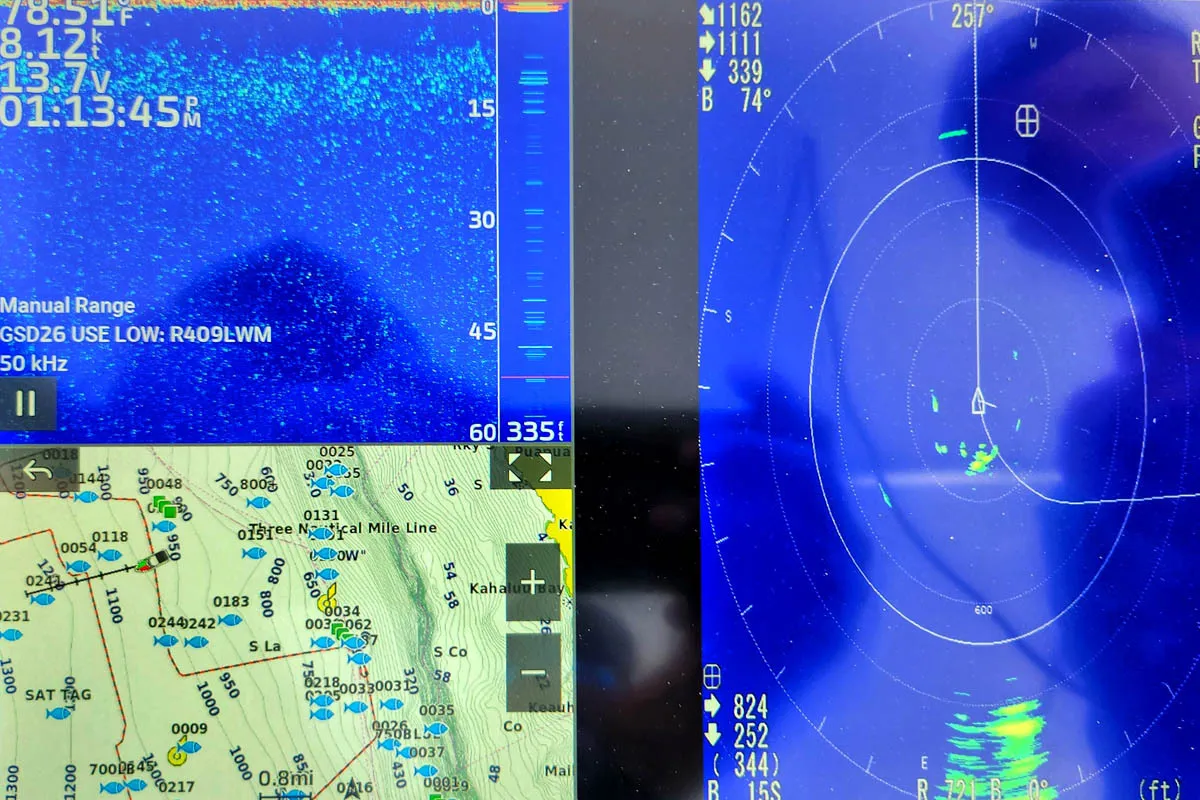
Traditional Knowledge and Local Insight
- Consulting Local Fishermen: There's no substitute for local knowledge when it comes to fishing. Engaging with local fishermen and charter captains can uncover gems that might not be widely known or are too recent to have made it onto digital platforms. These individuals often share tips on the best times to fish certain wrecks, based on tides, currents, and seasonal fish movements.
- Fishing Charts and Maps: Traditional paper charts and maps are still invaluable tools for locating potential fishing spots. They offer a broad overview of the area, including depth contours, navigational hazards, and sometimes, marked wrecks. Combining chart analysis with local knowledge can pinpoint locations that offer the best conditions for grouper fishing.
Critical Factors for Selection
- Depth: The depth of a wreck plays a crucial role in determining its suitability for grouper fishing. Different grouper species prefer various depth ranges, and understanding these preferences can guide the selection process. Additionally and perhaps more importantly, the depth influences the type of gear and techniques used, affecting the overall fishing strategy.
- Current: Currents significantly impact fish behavior around wrecks. Strong currents can concentrate baitfish and attract predators like grouper to specific parts of a wreck. Knowing how to read currents and their effects on fish distribution is vital for choosing the right spot and positioning the boat effectively.
- Fish Habitat Preferences: Each wreck has its unique ecosystem, and not all will be home to grouper. Factors such as the complexity of the structure, the presence of hiding spots, and the type of surrounding seabed all influence the likelihood of finding grouper. Selecting a wreck that aligns with the known habitat preferences of your target species increases the chances of a successful outing.
Essential Gear and Techniques
In the effort to land a formidable grouper, the significance of selecting the right gear and tackle cannot be overstated. The equipment chosen by the angler becomes the crucial link between them and the fish, transforming a routine catch into an epic battle of wills. The strategy begins with assembling a set of tools designed to outmatch the grouper's strength and cunning, ensuring that once hooked, the fish is guided away from the wreck's entangling embrace. Here's a detailed overview of the essential gear tailored for wreck and reef fishing, aimed at securing these aquatic behemoths.
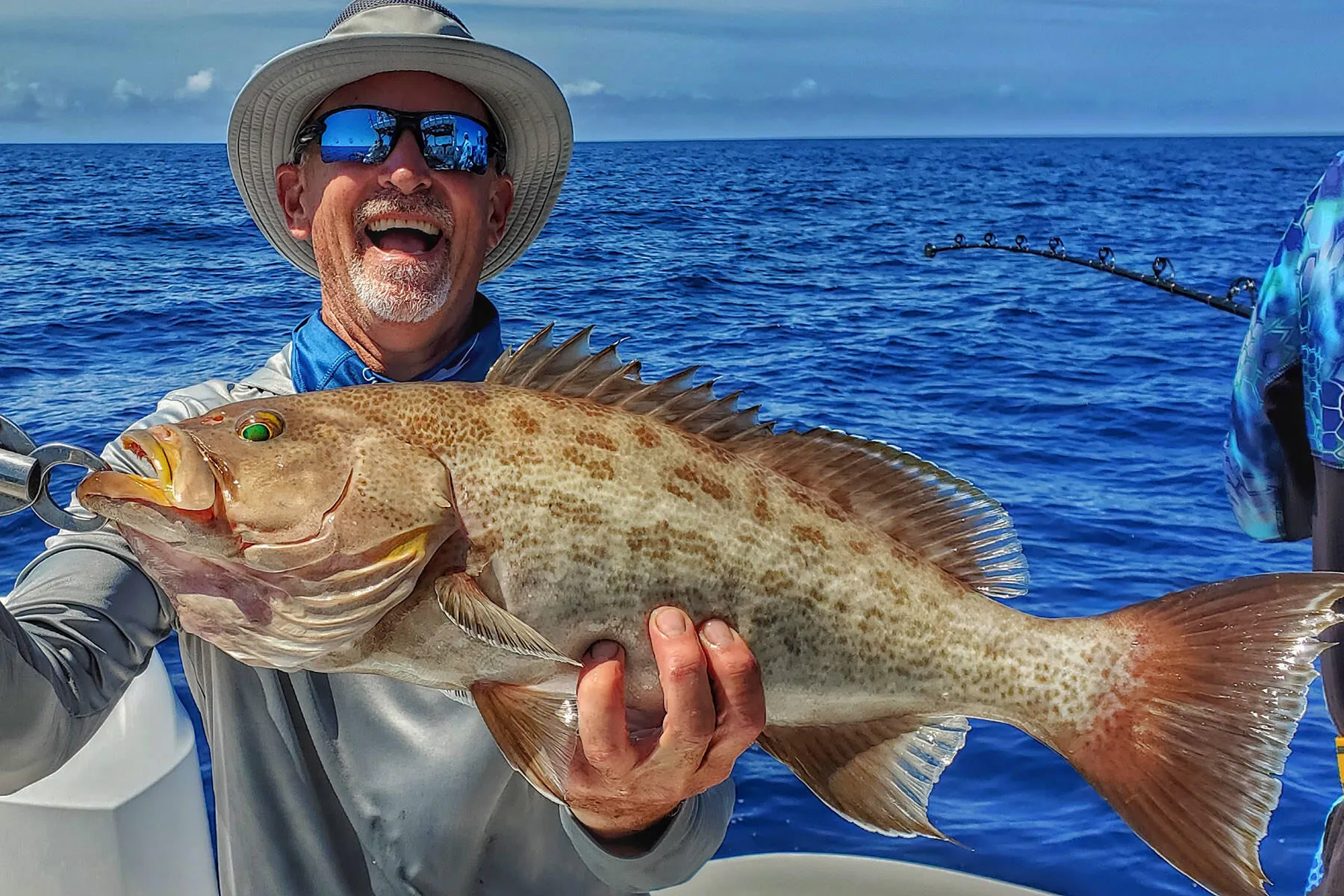
Rods for Wrecks
The choice of rod is a deeply personal decision, influenced by the angler's style and the specific challenges of grouper fishing. A long, 7-foot solid fiberglass rod offers unparalleled pliability, making it ideal for the nuanced play required to coax a grouper away from its lair. Its length allows for greater leverage, a crucial advantage when battling the initial surge of a hooked grouper.
Reels
The reel is the heart of the tackle, its construction and functionality dictating the flow of the fight. High-quality reels with sturdy construction and robust drags are non-negotiable for grouper fishing. The Penn International VISX Two-Speed Lever Drag Reel, Seigler LGN (Large Game Narrow) Lever Drag Fishing Reel, and Shimano Tiagra A Two Speed Lever Drag Reels stand out as exemplary options. These reels offer the precision and power needed to handle the sudden runs and immense strength of a grouper, ensuring reliability when it matters most.
Mono or Braided Line

Hooks and Lead
The terminal tackle completes the angler's arsenal. Large, sturdy hooks are a must for grouper fishing, with 9/0 or 10/0 circle hooks being the ideal choice for their ability to secure a solid hookup in the corner of the fish's mouth, minimizing the chance of the fish swallowing the hook and getting gut-hooked.
Essential Fishing Techniques, Tackle and Rigs Recommendations
- Bottom Fishing: This classic technique is incredibly effective for grouper, especially around wrecks. The goal is to get your bait right into the grouper's lair, using heavy weights to counteract strong currents. A recommended rig for this purpose is the Carolina rig, using a heavy egg sinker (3-4 ounces or heavier, depending on current strength) above a heavy duty three way swivel, followed by a 6-8 foot heavy-duty monofilament leader (100-120 pound test) terminating in a 9/0 or 10/0 circle hook. This setup is ideal for presenting large live baits like pinfish, grunts, or a chunk of bonito directly on the bottom.
- Jigging: A more active technique that can trigger strikes from aggressive grouper is vertical jigging. Using a high-speed, high-power reel like the Shimano Saragosa SW paired with a jigging-specific rod such as the Shimano Trevala, anglers can work metal jigs effectively around the wreck. The recommended jigs would be 200-300 gram, depending on the depth and current, in colors that mimic local baitfish or squid. The erratic action of the jig mimics wounded prey, often irresistible to a lurking grouper.
- Live Baiting: For live baiting, using a setup that allows the bait to swim naturally while keeping it in the strike zone is key. A knocker rig, where the weight slides directly above the hook, allows the live bait freedom of movement and can be very effective when fishing closer to the structure. A suitable setup would include a Penn International VISX reel for its drag reliability and power, paired with a heavy action rod capable of handling large fish and weights. Live pinfish, ballyhoo, and small bonito are top choices, hooked through the nose or upper back to ensure they remain lively and appealing.
Techniques for Positioning and Presentation
- Drifting: This technique is enhanced by judicious use of the engine to maintain optimal positioning relative to the wreck and current. By precisely controlling your boat's position through strategic drifting or using a GPS-enabled spot lock functionality, you can effectively present your bait around wrecks. This method is particularly useful for covering larger areas or when the exact location of the grouper is unknown. A good rule of thumb is to mark the spots where you get bites and run the same drift pattern again. You will probably get additional bites.
- Anchoring: For a more targeted approach, anchoring upcurrent of a wreck and presenting baits back into the structure can be highly effective. This requires accurate GPS marking and a robust anchoring system capable of holding your boat in strong currents.
Rigs for Success
- Three-Way Swivel Rig: This rig is perfect for bottom fishing, allowing your bait to stay close to the wreck while minimizing snag risks. Tie an 80-100 pound braid mainline to one eye of a stout three-way swivel. Connect a 40-foot length of 100-pound monofilament leader to another eye, terminating in a 9/0 or 10/0 circle hook for large live baits. To the final eye, attach a 3-foot length of 60-pound monofilament with a heavy sinker, ensuring the weight is just enough to maintain bottom contact without becoming easily snagged.
- Heavy Duty Jigging Rig: Utilize a high-strength braided line of 80-100 pounds tied to a heavy-duty jigging lure. This setup should be matched with a specialized jigging rod and reel combo designed for deep water and strong fish.
Safety Considerations
Tips and Tricks for Success
Wreck fishing for grouper in the waters off Florida is an endeavor that necessitates the marriage of skill, knowledge, and intuition to best a powerful fish. Each expedition offers invaluable lessons in the subtle art of angling, with the wrecks serving not only as fishing grounds but as dynamic classrooms. To maximize success, anglers must hone their ability to select the right bait, interpret the marine environment, and exhibit patience and perseverance. Here are expanded insights into achieving success in this challenging sport.
Choosing the Right Bait
- Scent: Grouper rely heavily on their sense of smell to locate prey, making baits with strong natural odors particularly effective. Live baits like large blue runner, goggle-eye, pinfish and especially small live bonito exude potent scents that can entice even the most wary grouper from their lairs.
- Size: The size of the bait can significantly impact its attractiveness to grouper. Larger baits tend to attract larger fish, as they offer a more tempting meal. However, it's essential to match the size of the bait to the size of the grouper you're targeting. A bait that is too large may deter smaller, yet still significant, catches.
- Durability: The rugged underwater terrain around wrecks and the grouper's powerful bite necessitate the use of durable baits. Live baits like pinfish and speedo (frigate mackerel) are not only appealing but also resilient, capable of withstanding the strong currents and abrasive structures that characterize wreck fishing environments. Hooking these baits through both jaws or the upper jaw with a VMC circle hook can enhance their durability, ensuring they remain intact and attractive to grouper for longer periods.

Reading Currents and Adjusting Strategy
Understanding and adapting to the currents is a skill that can significantly enhance your chances of success in wreck fishing.
- Current Direction: The direction of the current influences where baitfish and, consequently, predator fish like grouper will be located. Grouper often position themselves on the up-current side of a wreck, waiting to ambush prey swept along by the current. By analyzing the current direction, you can better position your bait to drift naturally into these ambush zones.
- Current Strength: The strength of the current affects bait presentation and tackle selection. In strong currents, heavier weights may be necessary to ensure your bait reaches the desired depth and remains in the strike zone. Conversely, lighter tackle can be used in weaker currents, allowing for a more natural bait presentation.
- Adjusting Tactics: Be prepared to adjust your fishing tactics based on current conditions. This might involve changing the weight of your sinkers, altering the length of your leader, or even switching fishing spots to find areas with more favorable current conditions.
The Importance of Patience and Perseverance
- Patience in Presentation: Taking the time to ensure your bait is presented correctly can make a significant difference. This might mean waiting for the right current conditions or persistently working a specific area of a wreck where grouper are known to congregate.
- Perseverance Through Challenges: Not every trip will result in a trophy catch, but each provides an opportunity to learn and grow as an angler. Perseverance in the face of missed strikes, lost tackle, or unfavorable conditions is often rewarded with unparalleled experiences and, eventually, the satisfaction of a successful catch.




